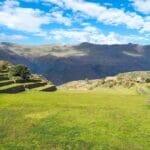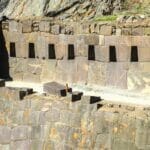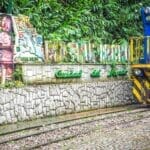Dear reader: This article contains links to products and services that I may be compensated for, at no extra cost to you.
Ollantaytambo is my favorite town in the Sacred Valley of Peru, and I’m not alone. So many visitors rush through Ollantaytambo on their way to Machu Picchu, or as a part of a Sacred Valley day tour like this one, and wish they had budgeted more time for it.
Personally, I fell in love with Ollantaytambo from the moment I arrived (Pisac was also great, but couldn’t quite compare, and I even liked Ollantay more than Cusco). I spent four whole days there but easily could have stayed longer. In this article, I’ll introduce the best things to do in Ollantaytambo, both in town and as half- or full-day trips.
While the Ollantaytambo ruins are the main draw, there are several other small (and free!) attractions in town. You can also walk to some other lovely ruins just outside of town, which I highly recommend. Last but not least, there are some truly memorable restaurants in Ollantaytambo.
I’ll also cover a truly excellent guesthouse that I stayed at in town.
Table of Contents
What Makes Ollantaytambo Special?
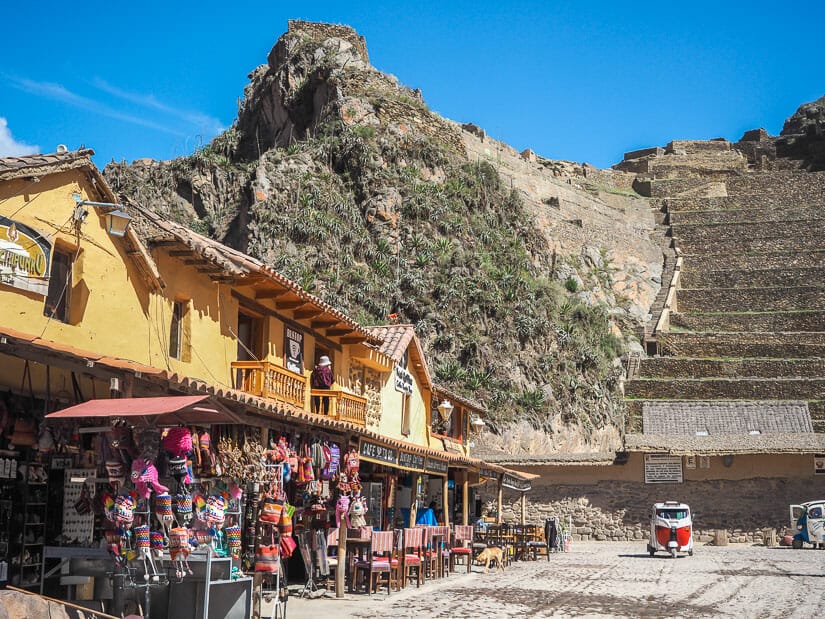
Ollantaytambo (pronounced “O-yan-tay-tombo” and often simply called “o-YAN-ta” by locals) is the closest major Sacred Valley town to Machu Picchu.
Trains from Cusco to Machu Picchu pass through Ollantay. Part of my excitement arriving there and seeing the trains at the station was the feeling that I was that much closer to Machu Picchu!
The Ollantaytambo ruins, or “Ollantaytambo Archaeological Site”, are second in importance only to Machu Picchu itself (you’ll find out why below!) They are at the top of the list of the ruins that you shouldn’t miss in the greater Cusco area.
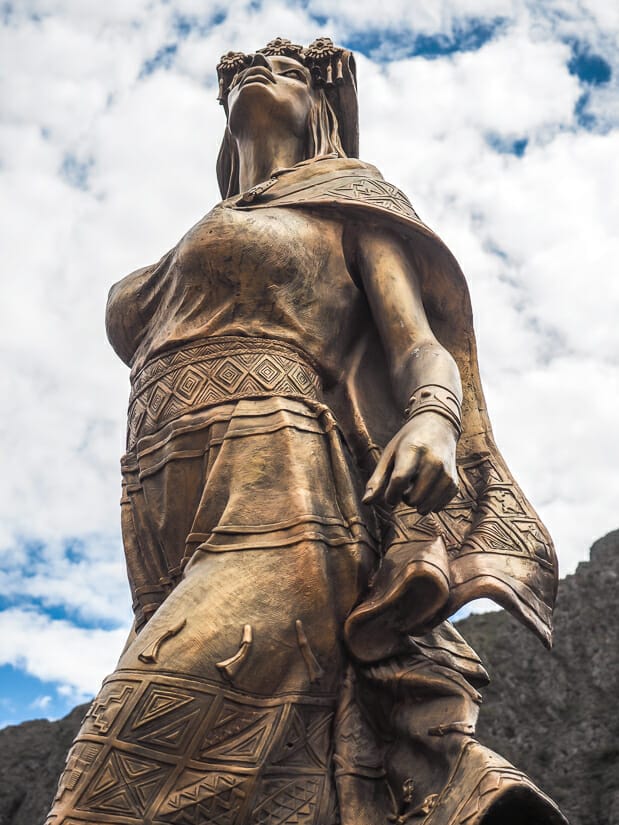
But the town is so much more than just the main ruins. On the mountain at the opposite end of town, there are even more awesome ruins (Pinkuylluna) that hardly anyone visits. From most places in town, you can see both ruins.
The town itself, especially the original Inca section called Qosqo Ayllu, is the best preserved living Inca town in existence, with original stone walls and canals with flowing water. It’s the closest you can get to transporting to a real Inca town at the height of their civilization!
Around Ollantaytambo, there are several more ruins that you can visit for free (I’ll cover several below). Last but not least, I enjoyed some phenomenal food and drinks in Ollantaytambo.
Where to Stay in Ollantaytambo

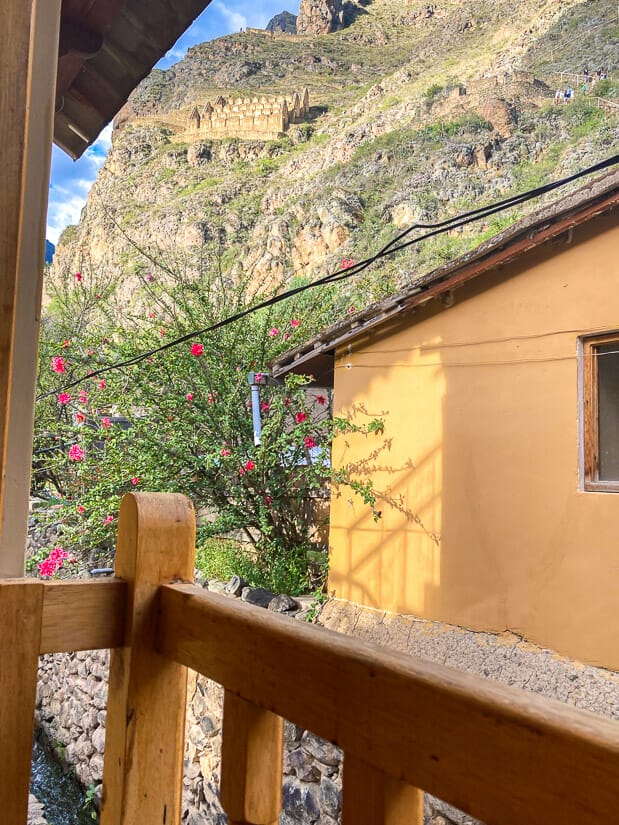
When I travel, I always spend loads of time researching the best places to stay. My effort paid off, as Kamma Guesthouse (see on Booking / Agoda / TripAdvisor) was one of the best I’ve ever stayed in. The owners, two local women, were incredibly welcoming and helpful. They really went out of their way to give me all kinds of tips and info I needed.
What’s more, the rooftop patio (where the huge breakfast is served) has an incredible view of both of the main ruins in Ollantaytambo. At night, I could hear the sound of flowing water from the Inca-built canal just outside the guesthouse. The guesthouse was perfectly located in the quiet but extremely atmospheric Qosqo Ayllu (original Inca portion of the city). I can’t recommend this guesthouse enough!
For something more adventurous, consider staying at Sky Lodge Adventure Suites (see on Booking / TripAdvisor). These accommodation consists of pods hanging on the side of an immense cliff. You have to climb the mountain up to your room! You’ll see a picture I took of this unique hotel further down in the article, plus some other similar ones in the area.
Things to Do in Ollantaytambo Town Center
The following attractions can all easily be visited on foot from anywhere in Ollantaytambo. Note that if you’re arriving in Ollantaytambo at the train station, it’s a 15-minute uphill walk (or a couple of soles to ride in a tuk tuk) to the plaza and main area of town.
Explore Ollantaytambo Ruins
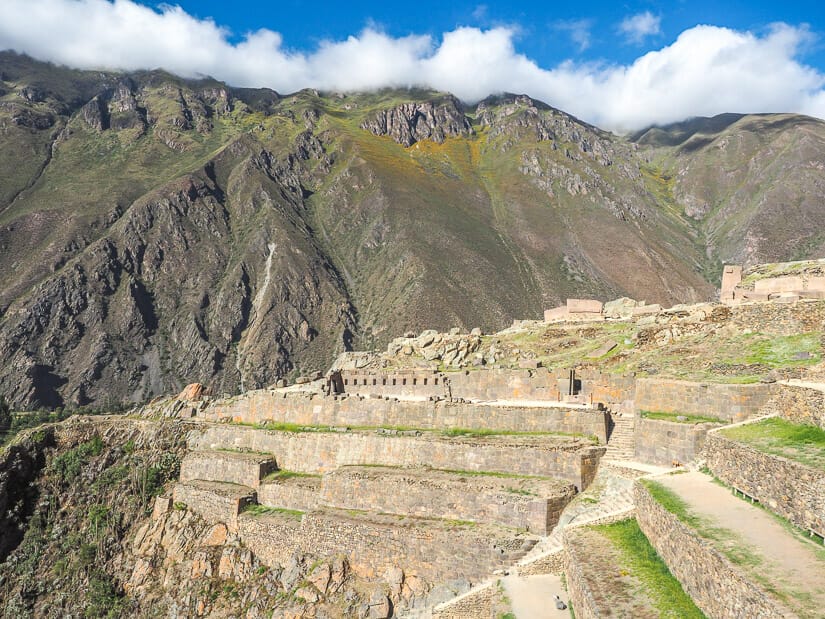
The Ollantaytambo Archaeological Park is the most important collection of ruins in the Cusco region. It was well known even before Machu Picchu was rediscovered.
Because the ruins are right beside town, rather than high up on a mountain like so many others, they are also some of the easiest ruins to visit in the greater Cusco region.
It was here that the only Inca defeat of the Spanish took place. During the siege of Cusco, the Inca Manco fled from Cusco to Ollantaytambo and set up his rebel headquarters there.

In 1536, the Spanish tried to stage a secret attack. Manco led his army from the vantage point at the top of the ruins, using spears, stones, and flood waters to defeat the attackers.
The entrance to the ruins is only a five-minute walk from the Plaza de Armas (main square of Ollantaytambo) or 20-minute walk from the Ollantaytambo train station.
You can budget about two hours to visit the ruins. If possible, go as soon as they open at 7 AM and you’ll have the whole site to yourself like I did!
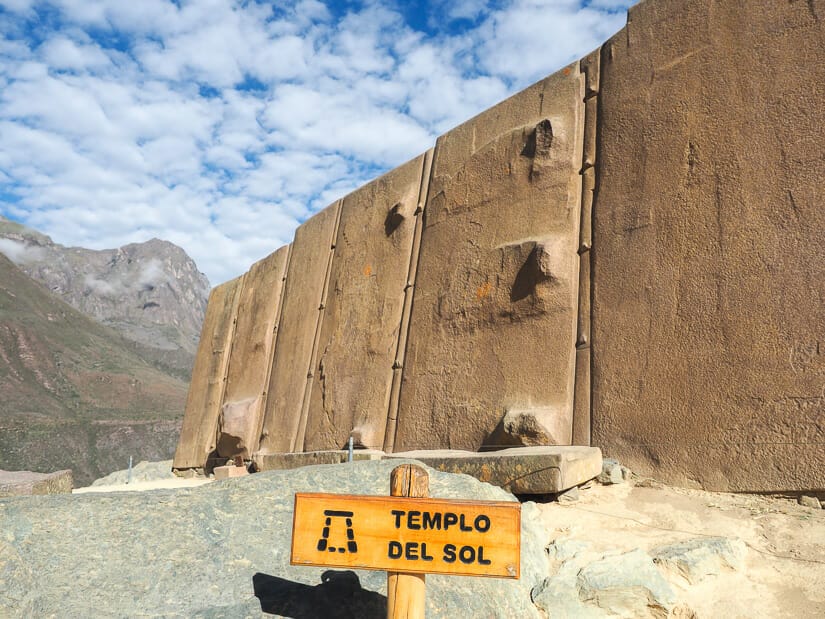
When you first arrive, you’ll need to climb 200 steps up 17 imposing terraces. At the top you’ll find the famous Sun Gate and monolithic pink Temple of the Sun. The path then crosses a military zone and the tops of several terraces to some colcas (storage houses). It then descends to some lovely Ceremonial Baths and a Water Temple.
Entrance to the ruins is covered by the full or partial Cusco Boleto Turistico (Cusco Tourist Pass, 130/70 soles, valid for 10/2 days). My my guide to the Cusco Tourist Pass for details about using it.
After visiting the ruins, there is a mini-village of souvenir stalls set up just outside the entrance gate to the ruins, called Mercado Turistico. I recommend then taking a rest at Sunshine Café, which has great coffee, food, and views of the ruins from the second floor and rooftop.

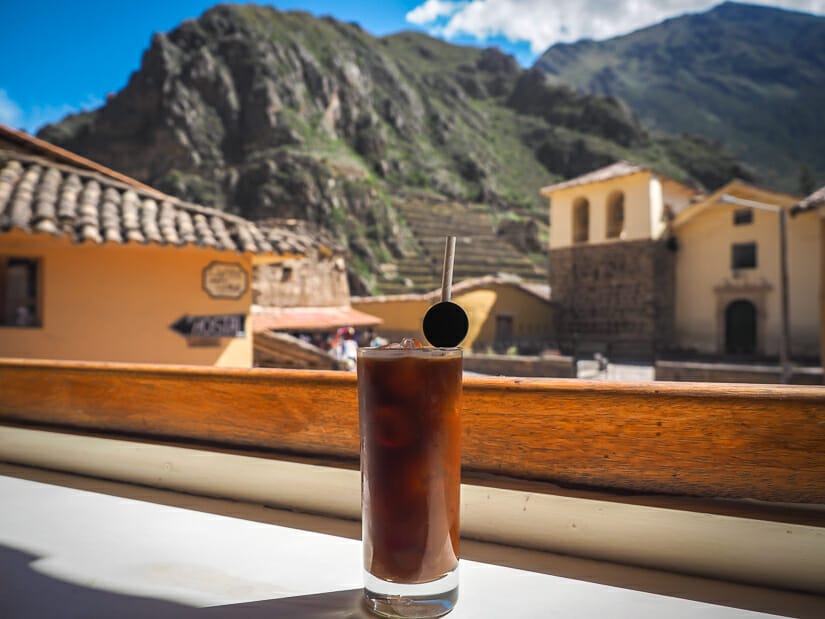
Have a Meal or Drink Overlooking Plaza de Armas
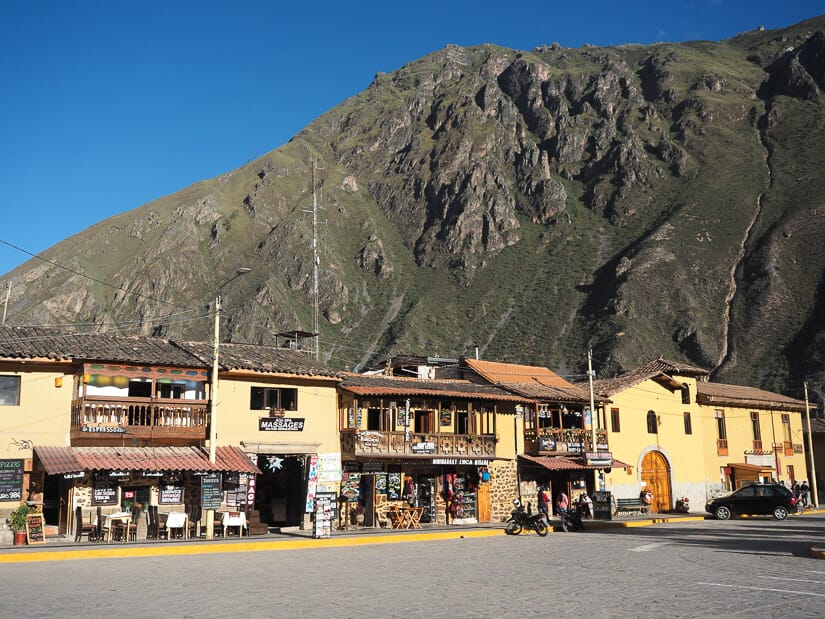
One quintessential Ollantaytambo thing to do, just like in so many other Peruvian towns and cities, is to have a drink or meal overlooking the main square.
Ollantaytambo’s Plaza de Armas is a large, relaxed square where most buses and colectivos arrive in town. Around it you’ll find the usual collection of typical tourist eateries offering wood fired pizza and local dishes, draft beer, and pisco sour happy hour deals.
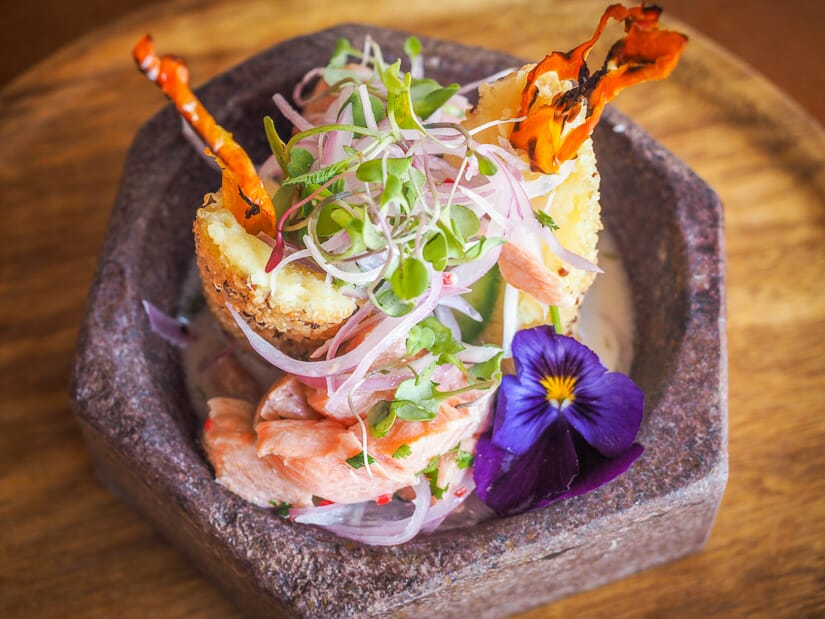
Two restaurants in particular stand out on the square for their exceptional food (I did loads of research, review reading, and on the ground testing to determine this).
The first is Amanto Cocina Sagrado. This is a relatively new but truly exceptional 2F restaurant at the northeast corner of the plaza. There’s no balcony, but the corner tables in the restaurant have plaza views.
This restaurant stands out for the high quality of its food and drinks and relatively low prices. Their signature dish, Causa Acevichada (quinoa encrusted causas with ceviche on top) was one of the best dishes of my entire Peru trip. Their cocktails are also excellent.
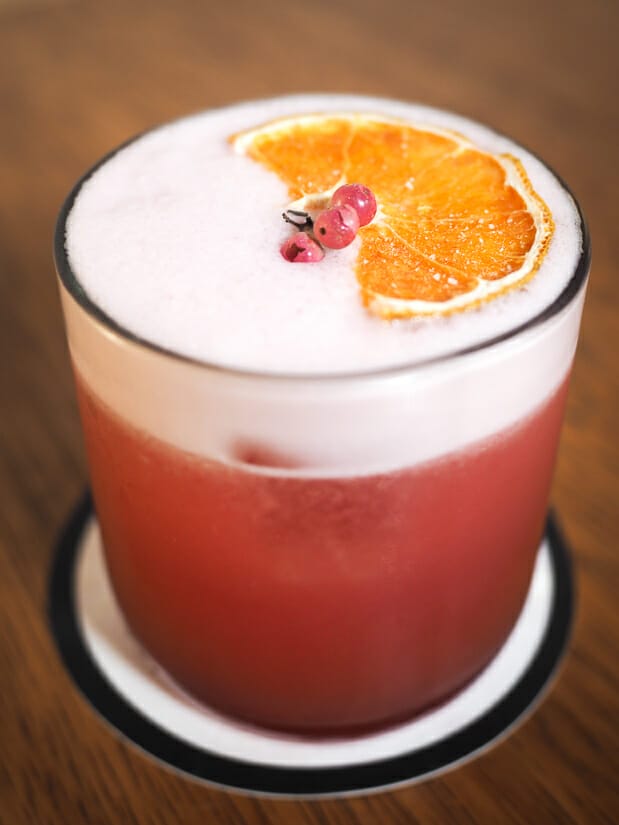
The second plaza-facing restaurant I especially recommend is Chuncho, which is run by El Albergue (the town’s most famous restaurant, at the train station, see the final entry in this section). It has a kind of upscale ranch vibe, with indoor seating and a 2F patio facing the plaza.
Like El Albergue, Chuncho has especially memorable cocktails, most of which include local Caña Alta and Matacuy spirits made at the Destilería Andina in El Albergue hotel (see below). As for food, the dishes are many with grains and produce grown in the hotel’s gardens and in the Sacred Valley.
See more details about these and other local restaurants in my recommended places to eat in Ollantaytambo.
Explore Qosqo Ayllu, the Original Inca Town
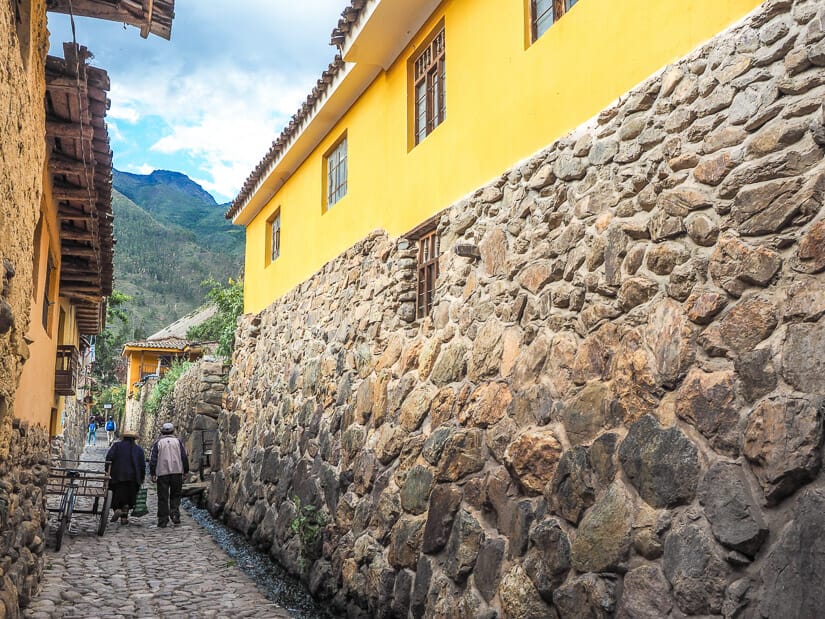
Qosqo Ayllu is the original Inca part of town, and the best preserved living Inca town anywhere in Peru. Almost all of the walking paths (that’s right, no cars!), canals, and building foundations are original Inca structures.
Four main ayllus or Inca clans still live there today, and you can peer into their courtyard communities. Some of them have beautiful stone doorways like those you can see at Machu Picchu and other ruins.

While exploring the old town, I was even invited into one local house, where there were countless guinea pigs running around on the floor (we’ll visit even more guinea pigs in another entry below!)
I especially recommend staying at Kamma Guesthouse, which is located on the eastern side of the old town, right across from the entrance to the trail to Pinkuylluna.
Hike up to Pinkuylluna (Inca Granaries)

Besides the main ruins in Ollantaytambo, you should really make time in your schedule to visit Pinkuylluna, also called the Inca Granaries, Inca Storehouses, or Depósitos de Pinkuylluna.
As the name suggests, this is a collection of colcas (storehouses) on the side of the mountain at the opposite (eastern) end of town from the main ruins (western end). The two ruins face each other, each offering an amazing view of the other, with the town in the middle. You can clearly see the colcas from just about anywhere in Ollantaytambo.
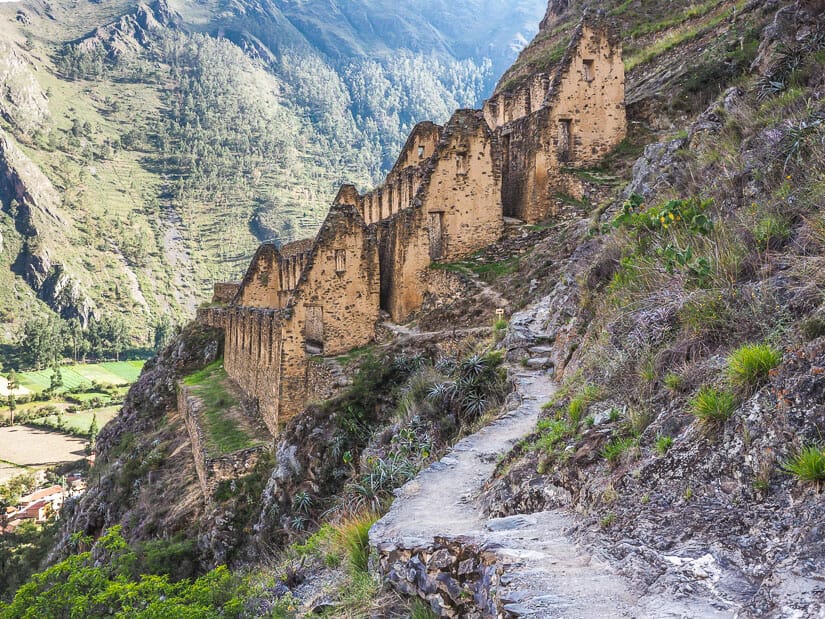
Unlike the main ruins, visiting Pinkuylluna is totally free, and also crowd free. Besides the colcas, there’s another collection of ruins on the same mountain, also clearly visible. You can easily visit both on the same hike.
Walking up, go right after a few minutes to visit those other ruins. Towards the top of them, you’ll find a trail and sign pointing left, connecting you to Pinkuylluna, from where you can hike back down.
In total, it takes about one hour to visit both, but it’s a steep hike up. The gated entrance to the path, which is opposite Kamma guesthouse, is open daily from 7:30 AM to 4:30 PM.
Visit Qelloraqay Archeological Site
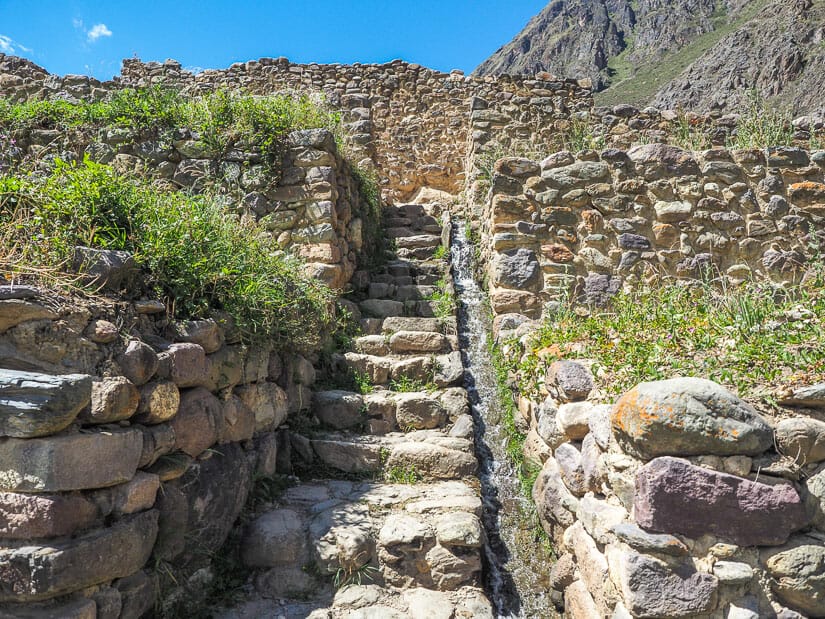
For an easier walk to more free ruins in Ollantaytambo, I recommend Qelloraqay ruins. These ruins are a 10-minute, slightly downhill walk from the Plaza de Armas to the southern end of town. They are beside the Urubamba River, quite close to the Ollantaytambo train station (but not possible to reach from the station).
Qellorakay ruins are compatively small and humble, but their lovely setting surrounded by farms is the main reason to visit.

To reach the ruins from the Plaza de Armas, walk down the road towards main ruins in town, but turn left on Av. Estudiante before reaching the bridge. You’ll pass the ATM and soon find yourself on a stone path with a running canal on the side.
After a few minutes, you’ll pass a school then stadium. The path goes around the stadium into a lovely natural area with a creek before crossing some farms and finally reaching the ruins.
On the way back up to town, watch for views of the peak of Mount Veronika in the distance. This was one of the most sacred mountains to the Incas. You likely won’t see anyone else at these ruins.
Walk to Punku Punku and Inka Pintay
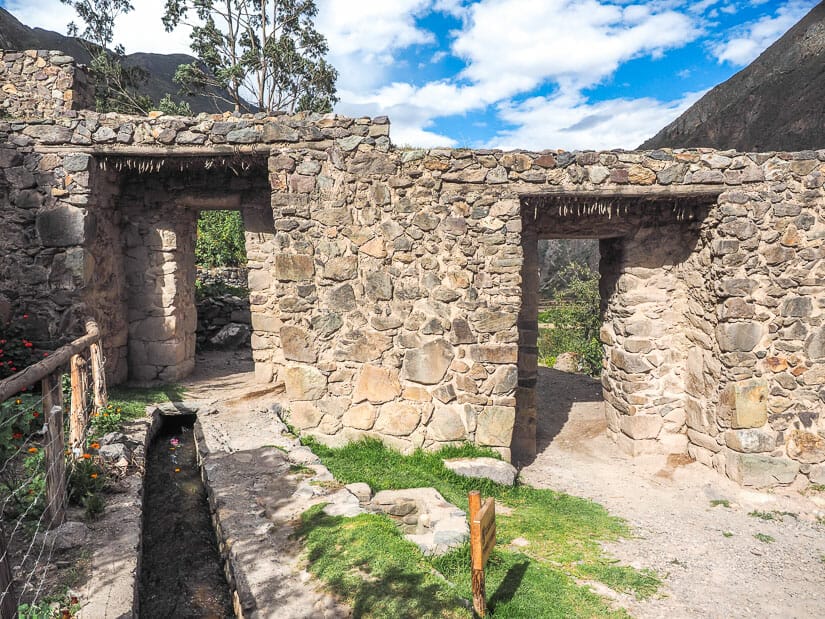
Here is yet another easy walk to some free ruins on the edge of Ollantaytambo town. These are located at the eastern end of town. They also entail a lovely walk into the countryside which I highly enjoyed.
From the Plaza de Armas, it’s only a five-minute walk to Punku Punku, which is the traditional Inca entrance to town for anyone arriving from the east. Along the way, note the “100 niche wall” along the side of the road, which is original Inca. At Punku Punku, you’ll find a double stone doorway with a small canal passing under it.
In fact, all cars driving into town will pass Punku Punku on the final turn into town, so also watch for it when driving in!
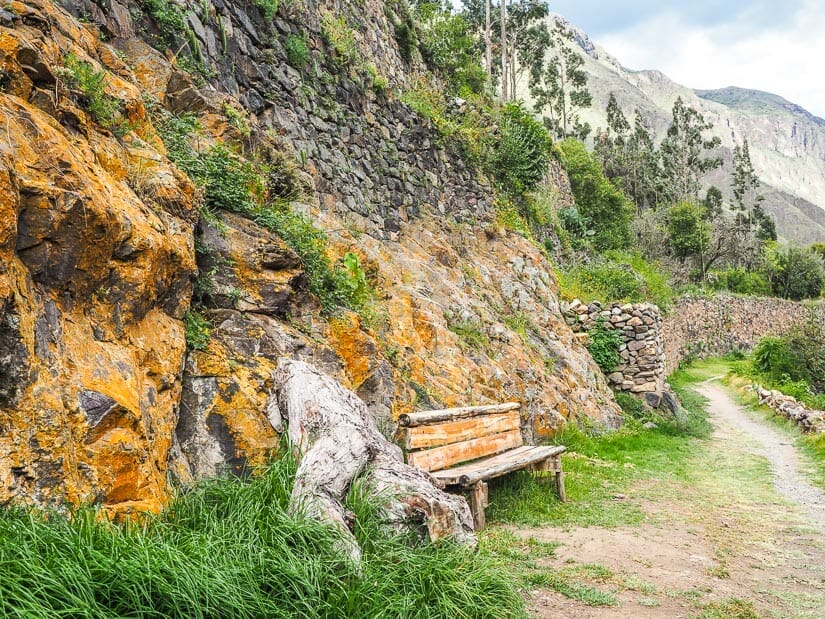
If you walk through Punku Punku, it’s only another 10 minutes on foot to reach Inka Pintay, another set of free ruins. The walk goes through a lovely section of countryside, with views down on farms and the Urubamba River. There are also a few benches along the way with excellent views.
Inka Pintay is a small collection of ruins next to the highway running into town. These include a small tunnel, a niche in a stone wall, and some elevated irrigation canals that you can climb up to if you’re feeling brave.
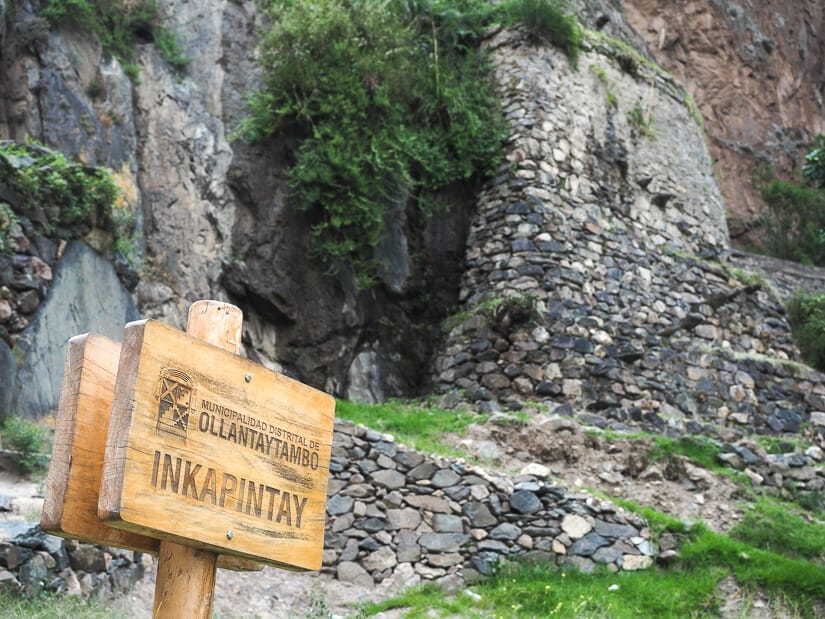
Much more difficult to reach is a hike near here that goes steeply uphill to some ruins on the cliff and a faint painting of Manco Inca on the cliff face. To find the trailhead, you’ll need to ascend to the terraces above the path between Punku Punku and Inka Pintay. Few people hike this trail, and a lot of the info online about it is incorrect because people often confuse it with Pinkuylluna.
If you use AllTrails, there’s no entry for it, but you can open a map for any other hike in town, zoom in to this area, and see the dotted line indicating a hiking path going up from Inka Pintay.
See Guinea Pigs at the Casa de Cuyes
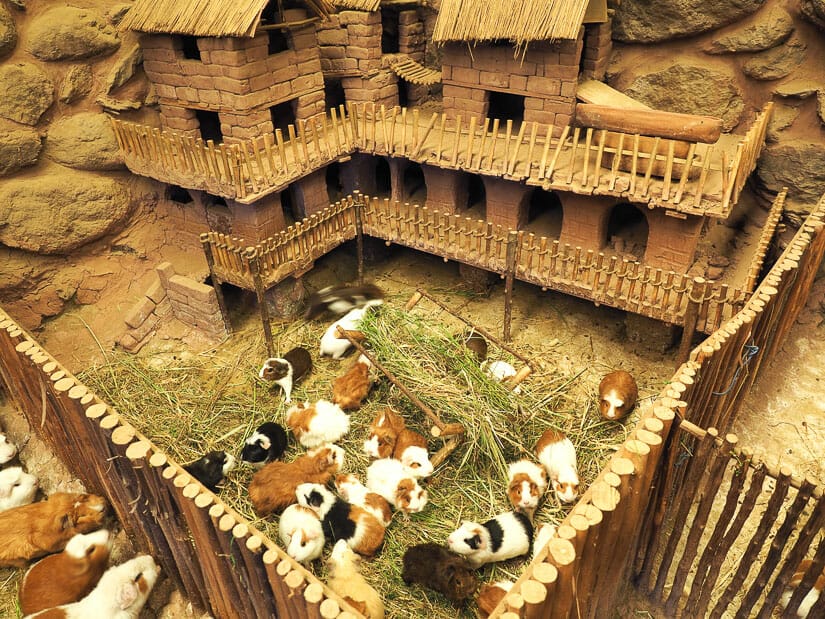
If you’d like to see a large number of guinea pigs before they become someone’s dinner, pay a visit to Casa de Cuyes, or “House of Guinea Pigs”.
There are hundreds of guinea pigs in pens, cute houses, and running around freely on the floor as you enter. You are free to take pictures, videos, or attempt to pet them. The baby ones are especially cute!
There’s no entrance fee, but you should leave a small tip in the jar. I saw other Casas de Cuyes on my trip (including in Pisac and in Chinchero), but this one in Ollantaytambo was by far the biggest, with the most guinea pigs.
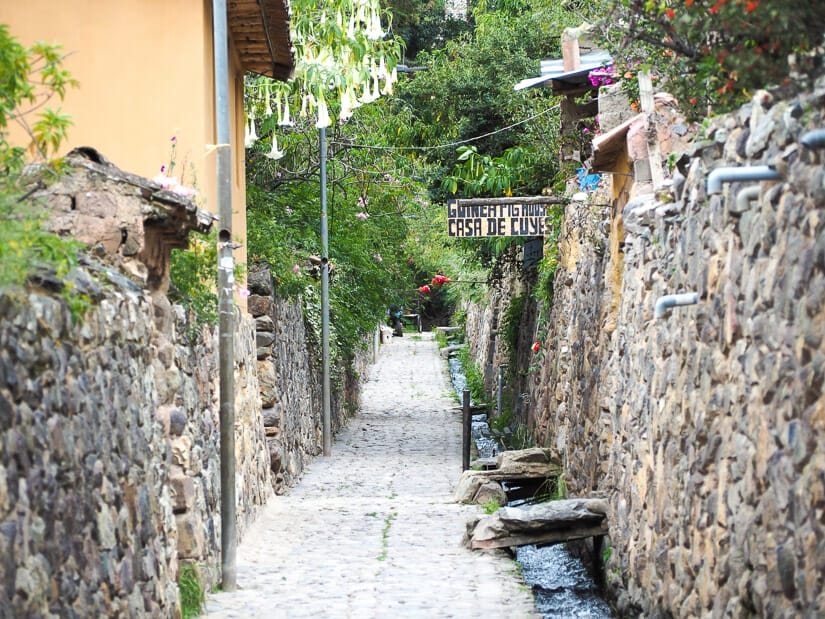
Casa de Cuyes is located on the easternmost lane of the Qosqo Ayllu, a few minutes up from Kamma guesthouse and the entrance gate to the Pinkuylluna hike.
Another establishment nearby worth a quick mention is ALQA (Museo de Arte Popular Andino). This is a small museum and café/bar/restaurant. Only one room in the museum is free to visit, while the rest is 40 soles for a 1.5-hour tour (a little too steep in my opinion, so I didn’t bother).
But the lovely indoor bar and outdoor seating area would be a great place for a snack or drink, especially when the yard is lit up at night.
For the best museums in the area, see my guide to the best Cusco region museums.
Shopping & People Watching at Mercado Central

Mercado Central Ollantaytambo (also called Mercado Abastos or San Pedro Market) is the main traditional market in Ollantaytambo. It is just one short block east of the southeastern corner of the Plaza de Armas.
The first floor of the market is mainly produce and food products, while the second floor has clothing and household items. It’s small compared to markets in Cusco or Lima, but still a good place for people watching or picking up cheap local products.
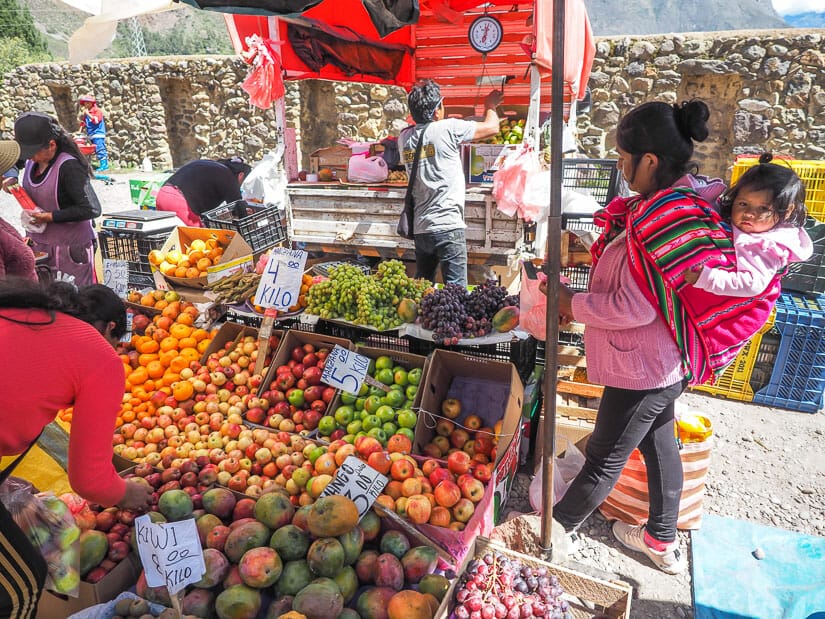
The market spills out into the street in front of it, where vendors sit before piles of their produce.
A great tip that I got from my guesthouse host is that every Tuesday morning, there are additional trucks selling produce from the Amazon, so you can see lots of interesting fruits and vegetables there. The trucks sell their products from the parking lot one block south of Mercado Central.
Make or Buy Chocolate at ChocoMuseo

ChocoMuseo is a chain of chocolate stores with locations in Lima, Cusco, and Ollantaytambo. It has now also branched out to other countries in Latin America.
All the Peru branches of ChocoMuseo sell the same products: a large variety of chocolate bars, chocolate covered quinoa, chocolate liquors, chocolate tea, chocolate soap, chocolate candles, and so on.

A few of the branches are a little more museum-like, with some statues made of chocolate, but the Ollantaytambo branch is quite small and is mainly just a shop.
Like the other branches, ChocoMuseo Ollantaytambo also offers a bean-to-bar chocolate-making class, which takes place on the second floor. You can see the prices and reserve a class here. The shops is on a cute little side street just off the main road to the ruins, with a traditional canal flowing down the sidewalk in front of it.
Dine at El Albergue While Watching Trains Go By

El Albergue is the most famous hotel and restaurant in Ollantaytambo. The hotel occupies a large area next to the train station. In their gardens they grow products that are used in their two restaurants (El Albergue and Chuncho on the Plaza de Armas). They also have a Caña Alta distillery on site, Destilería Andina, which you can visit upon request.
El Albergue restaurant is located right next to the train tracks where people catch trains to Aguas Calientes for visiting Machu Picchu (see my recommended things to do in Aguas Calientes!) The restaurant is housed in part of the station, so it feels like fine dining but inside a cool train station.
I really enjoyed watching the trains go by from the window beside my table and the feeling that I was “on the way” to Machu Picchu. The cocktails and beer here were especially good. However, my main complaint is that my meal took a full hour to come out, even though they weren’t super busy.
The food was decent but not my favorite in Ollantaytambo. This was a little surprising, as they are billed as the finest restaurant in town.
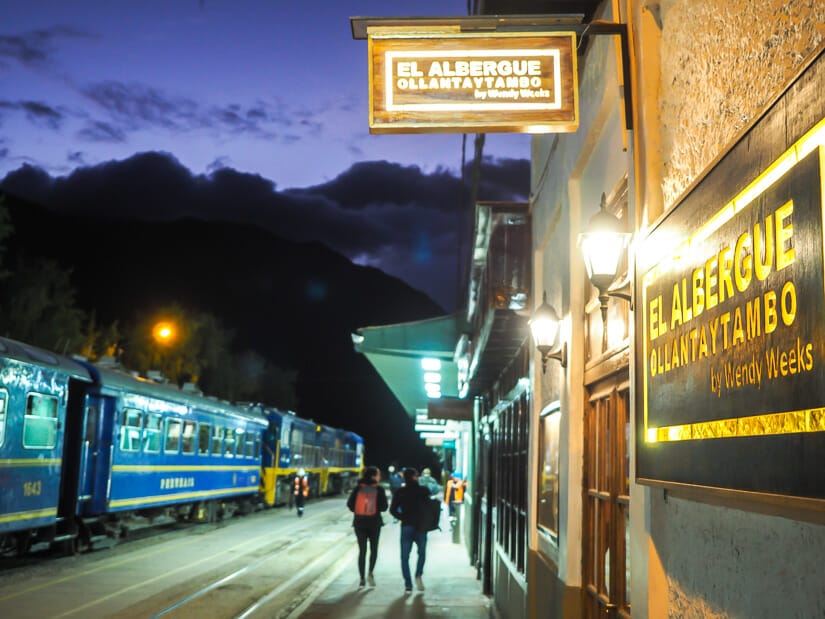
I recommend booking a dinner here for a date or to enjoy the atmosphere, but don’t come if you want to eat fast.
To reach the restaurant from town, you’ll need to walk 10 minutes down from the Plaza de Armas then actually enter the train station. The guards will ask to see a train ticket to enter, but you can just tell them you are going to El Albergue restaurant and they’ll let you in. Then walk down the train platform to find the door to the restaurant.
More Places to Visit around Ollantaytambo
Ollantaytambo is a great base for visiting other places in the Sacred Valley. The following five entries could be done as half-day or full-day trips from Ollantaytambo.
Visit the Original Sacred Valley Brewery
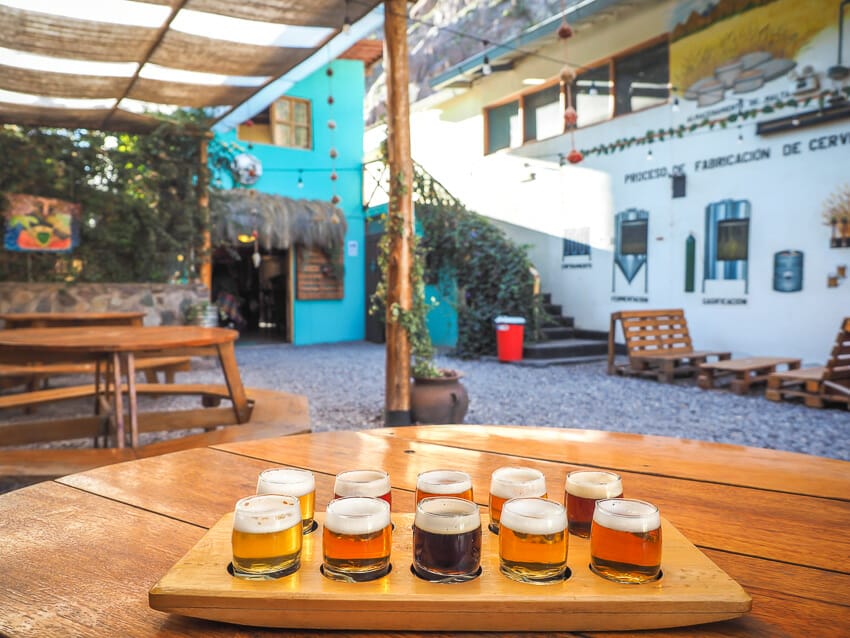
Although the Ollantaytambo branch of the Sacred Valley Brewery (Cerveceria del Valle Sagrado) seemed to be closed for good when I visited, you can still visit their main branch nearby. It is located in Pachar, a small town 15 minutes’ drive or 1 hour 15 minutes’ walk east of town.
This is where all Sacred Valley beers are actually brewed before they are sent out to their brewpubs in Pisac, Cusco, and Lima. You can peer into the room where the beer is brewed, or cozy up in the large outdoor seating area.
To get there, take any Cusco or Urubamba-bound colectivo from Ollantaytambo. You could also walk there in about 1.5 hours following a lovely Inca trail along the south side of the Urubamba River (see next entry).
Hike to Chocana and Ñaupa Iglesia ruins
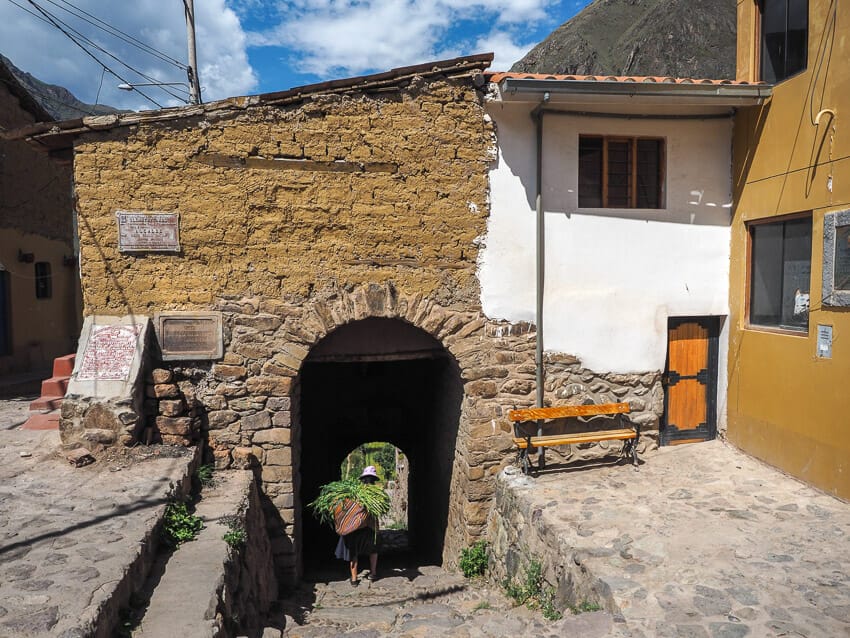
On one of my days in Ollantaytambo, I went on a great half-day hike to Chocana and Ñaupa Iglesia ruins, two remote and seldom-visited ruins east of town.
I started my hike from the main plaza in Ollantaytambo, then made my way to the traditional arch located here at the eastern edge of town. From there, I walked down to and crossed Puente Inca (Inca Bridge) at the southern end of town. This is not to be confused with the famous Puente Inca at Machu Picchu!
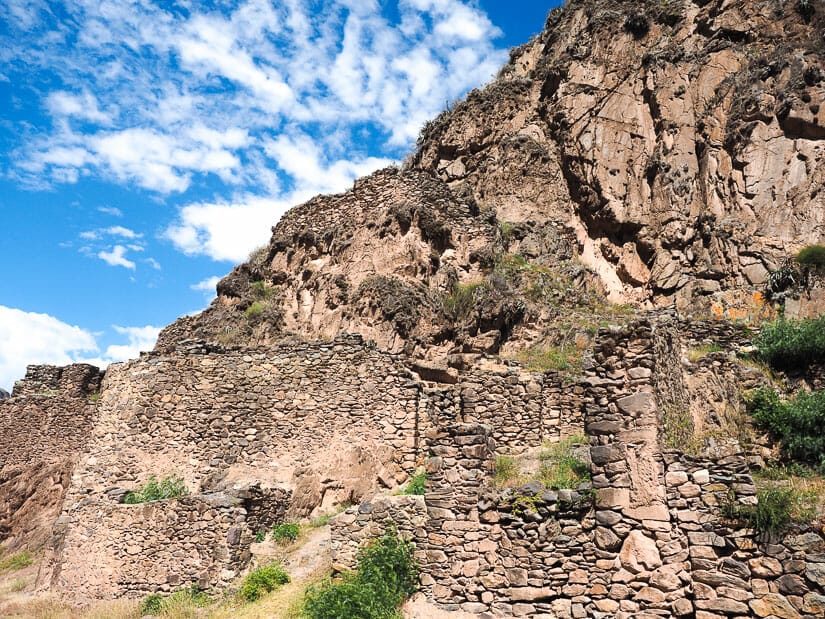
From there, it was a lovely one-hour stroll along the Urubamba River to Pachar area. This is an original Inca trail, with stone walls along parts of it. Along the way, I passed the remote Chocana ruins overlooking the river, as well as several cattle and artichoke farms.
Getting close to Pachar, I could see the shining pods of Sky Lodge Adventure Suites hanging from the cliffs across the river (see image below). Note that there are two other such hotels in the Ollantaytambo area – Star Lodge Adventure Suites and Vertical Sky Luxury Suites.
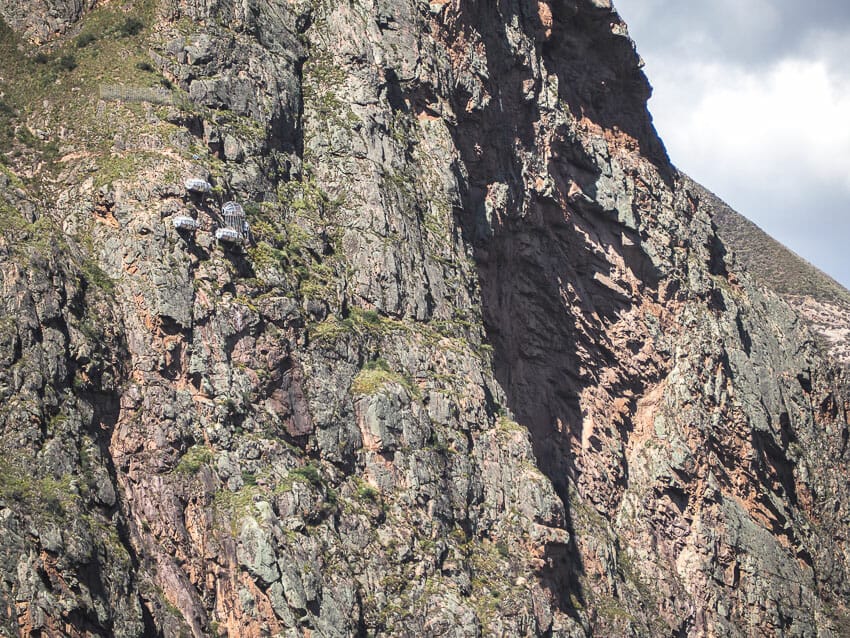
Reaching the main Pachar-to-Cusco road, I turned right on the train tracks (watch for passing trains on their way to Machu Picchu or Cusco!)
After following the tracks for 20 minutes, I reached the base of Ñaupa Iglesia, with a sign indicating the archaeological site. From the base, it’s a very steep but short uphill climb to the ruins, which are inside a cave up on the valley wall. I even had to use my hands in a few sections!

There isn’t much to the ruins. There’s a carved stone at the entrance to the cave, a wall with niches sticking out from it, and another rectangular niche carved inside. Still, the view from the cave is pretty epic, and there is a kind of spiritual energy to the place. Plus, just getting there was most of the fun!
After visiting the ruins, it only makes sense to hike down for a beer at the Sacred Valley Brewery in Pachar. You can then flag down a colectivo for the short ride back to Ollantaytambo.
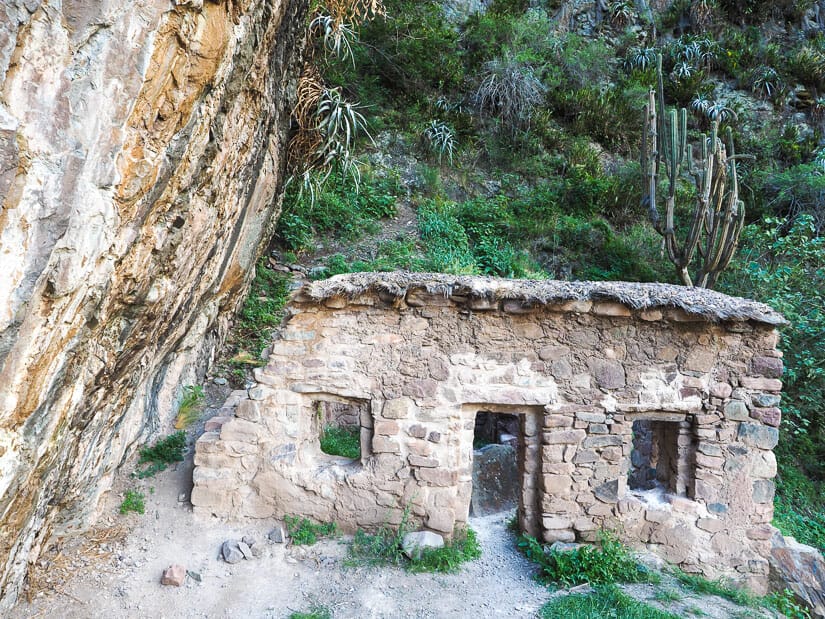
In total, this trip took me about five hours. I recommend using a combination of GoogleMaps and AllTrails to find the way. Ñaupa Iglesia is indicated on GoogleMaps but not AllTrtails. And while AllTrails doesn’t have an entry for this hike, nor does it show Ñaupa Iglesia, it does have dotted lines indicating the trail to it.
I use the paid version of AllTrails so I can download offline versions of the maps and still see my GPS location on them, even when there’s no Internet connection.
Visit Remote Pumamarka Ruins

On another of my days in Ollantaytambo, I did another worthwhile half-day trip to more remote ruins outside of town. Pumamarca is located up a valley north of Ollantaytambo. The fort was built there to protect this entrance to the Sacred Valley.
While you could hike from town to the ruins (two hours, mostly uphill), I opted to take a colectivo part of the way there and hike back down. The colectivo departed from this parking lot (just ask for Pumamarca and locals will point you to the right one) and took 20 minutes.
Don’t be surprised if the driver passes an entrance sign for the ruins. It’s better to ride further up to the village of Pallata and get off there. From this picturesque little village, it took me about 1 hour to walk up to the ruins.
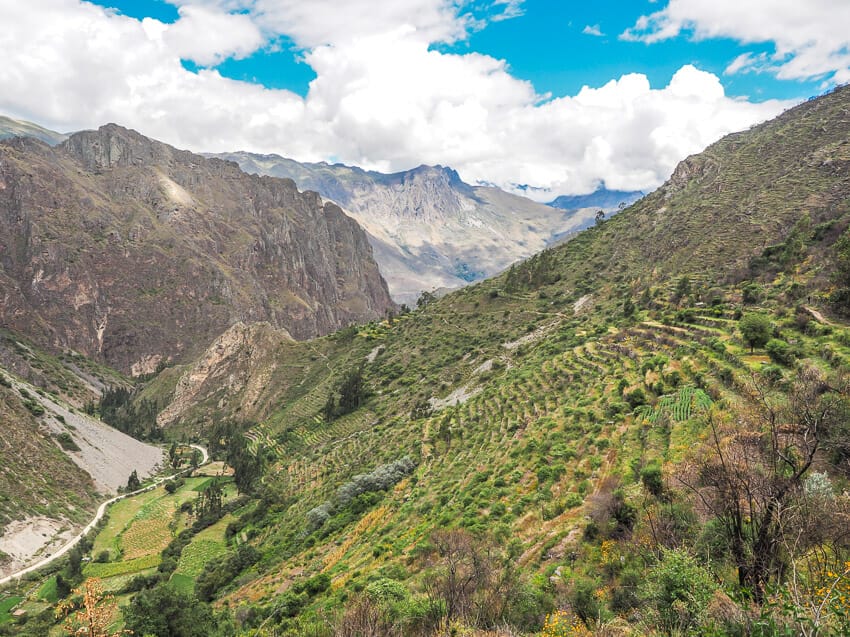
The ruins themselves weren’t the most spectacular I’ve seen, but it was the surrounding scenery of the valley that really blew me away. Local farmers often let their alpacas into the ruins to graze. Many visitors see them amidst the ruins, but unfortunately none were there when I visited.
The walk back to Ollantaytambo took me 1.5 hours. It was a lovely stroll through mostly farmland, with incredible scenery (and no people!) the whole way. I also saw many beautiful wildflowers.
For this hike, I used this AllTrails map.
Hike to the Inca Quarries and Inti Punku
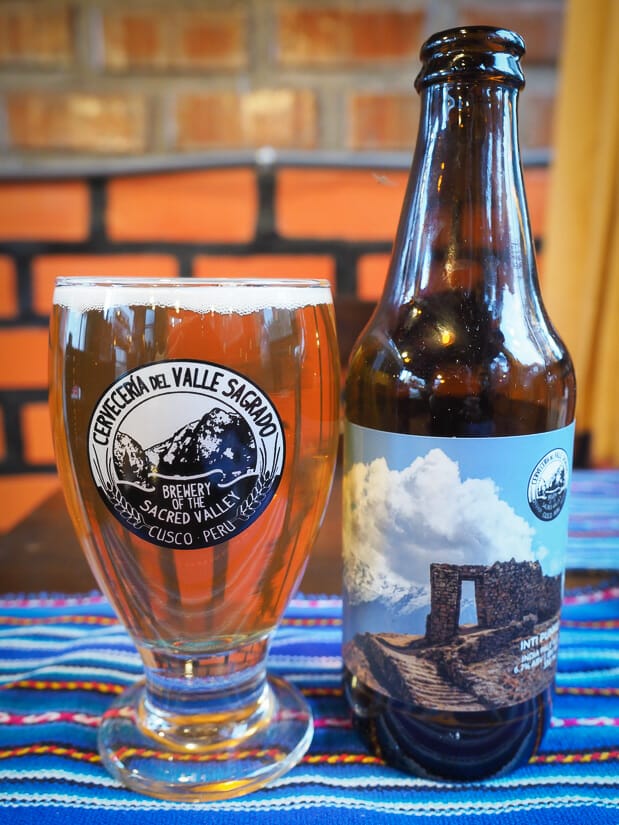
A more difficult hike from Ollantaytambo is the full-day (7-hour) return hike to Inti Punku, the Sun Gate. This is not to be confused with the more famous Inti Punku overlooking Machu Picchu, at the end of the Inca Trail.
The Inti Punku near Ollantaytambo is an iconic ruin. It consists of a stone staircase leading up to a stone gate atop a mountain. The gate frames the sacred Mount Veronika. On the way to the hike, you’ll pass some picturesque stone quarries. The hike starts from Inca Puente at the southern end of town.
I never made it to this trail, so instead, I tried the Sacred Valley Brewery’s Inti Punku IPA. There’s a picture of the ruin on the bottle!
Embark on the Inca Trail to Machu Picchu
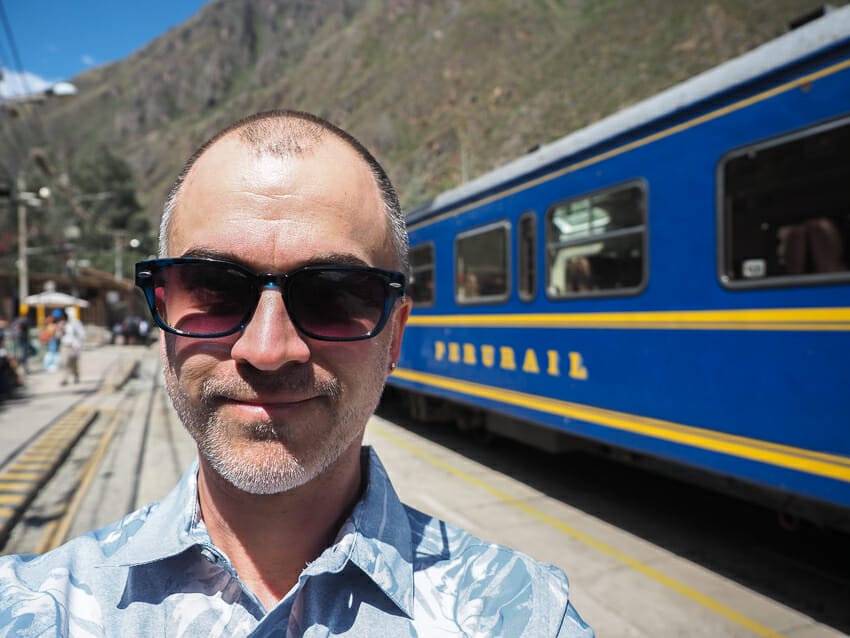
Ollantaytambo is very much an access point to the Inca Trail and to Machu Picchu itself. Many visitors, myself included, spend their last night in Ollantaytambo before starting the Inca Trail.
In fact, I highly recommend doing this, instead of coming directly from Cusco. It’s more fun to work your way up the Sacred Valley, starting at Pisac ruins, then Ollantaytambo. That way, the ruins build up in importance as you get closer to the New Wonder of the World.
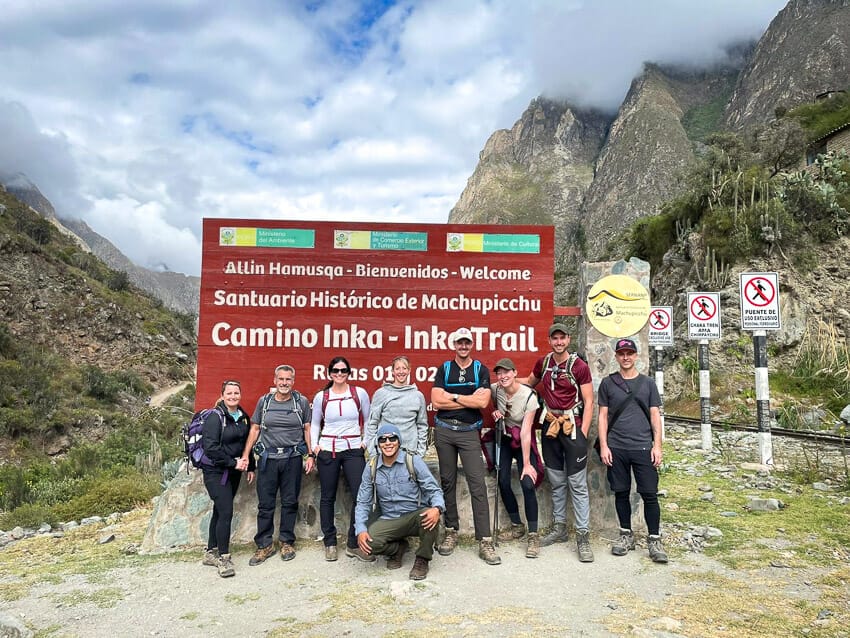
On my Inca Trail hike, every member of our group except me started from Cusco. I met up with them in Ollantaytambo, where we had breakfast before setting out. Members of the group were looking at the windows at how beautiful Ollantaytambo and its ruins were. Several of them expressed regret for not planning to spend more time there!
The actual starting point of the Inca Trail is called KM 82 or Piscacucho. It is located 15 kilometers northwest of Ollantaytambo along the Urubamba River. Those taking the train from Cusco can ride directly to this point, but our tour company drove us there in a van (30 minutes and much cheaper).
Well, that brings us to the end of my Ollantaytambo guide. I hope you’ve found more than enough ideas for planning this part of your trip. I also hope I’ve inspired you to spend more time in Ollantaytambo, my favorite Sacred Valley town!

